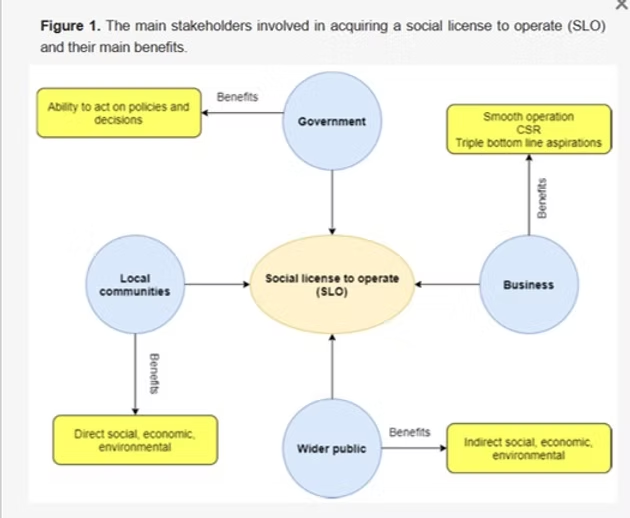“Social License to Operate in Mining: Present Views and Future Trends” by Konstantinos Komnitsas (2020) offers a comprehensive exploration of how the concept of social license to operate (SLO) has matured within the mining sector and where it is evolving next. Komnitsas begins by tracing SLO’s transition from a community-level concept to a strategic corporate imperative. He outlines how trust, legitimacy, and community acceptance are not just desirable, but essential to a project’s success and resilience. Rather than being a static permit, SLO is presented as a dynamic social contract—one that reflects community values, adapts to changing circumstances, and must be earned continuously through responsive engagement and equitable outcomes.
The paper introduces a refined framework highlighting three key stages: stakeholder mapping, relationship-building, and adaptive governance. Stakeholder mapping involves not just identifying relevant actors—Indigenous communities, artisanal miners, local businesses, NGOs—but also understanding power dynamics, local histories, and sensitivities. Relationship-building then requires transparent communication, trust-building activities, and tangible community benefits at each project phase. Adaptive governance refers to creating feedback loops—grievance mechanisms, community audits, periodic review mechanisms—that allow companies to adjust their performance and be held accountable. This tri-part framework links SLO to real-world developments like those in Peru, where stakeholder groups, transparency portals, and language-accessible materials have begun to operationalize these principles.
Looking to the future, Komnitsas emphasizes emerging trends that will shape SLO. First, deep engagement with small-scale and informal miners—who often fall outside formal governance systems—will be critical, echoing recent protests in Peru and Africa. Second, integrating environmental stewardship with economic inclusion, particularly in biodiversity-sensitive zones or energy-infrastructure corridors, will be vital to community consent. Third, digital tools—like traceability platforms, grievance apps, and transparent monitoring dashboards—are valuable only when designed with communities, not for them. In essence, Komnitsas argues that the next frontier for SLO lies at the intersection of ethical innovation, participatory co-governance, and contextual adaptability—ensuring mining and critical-infrastructure projects remain socially embedded, not adversarial.


